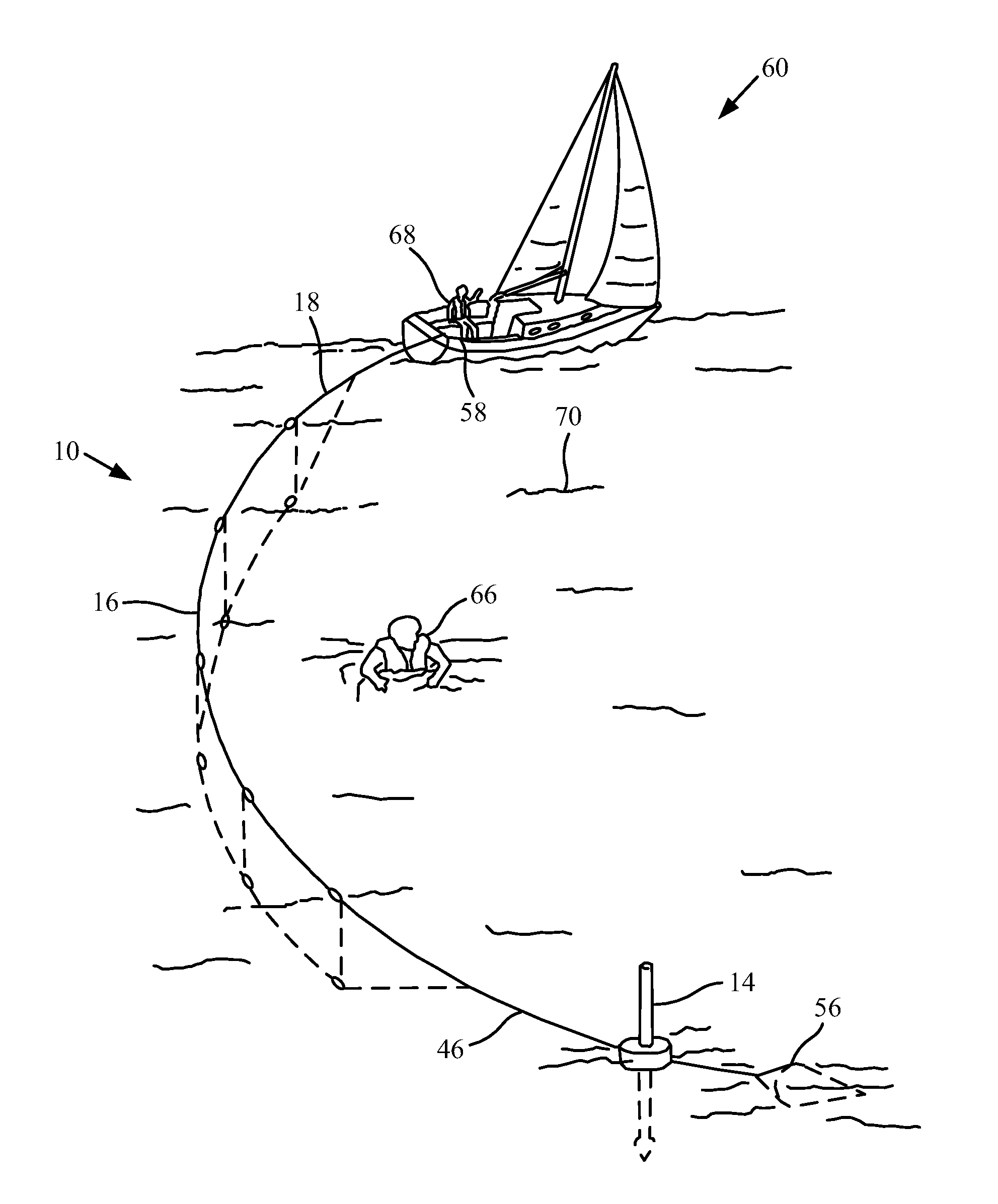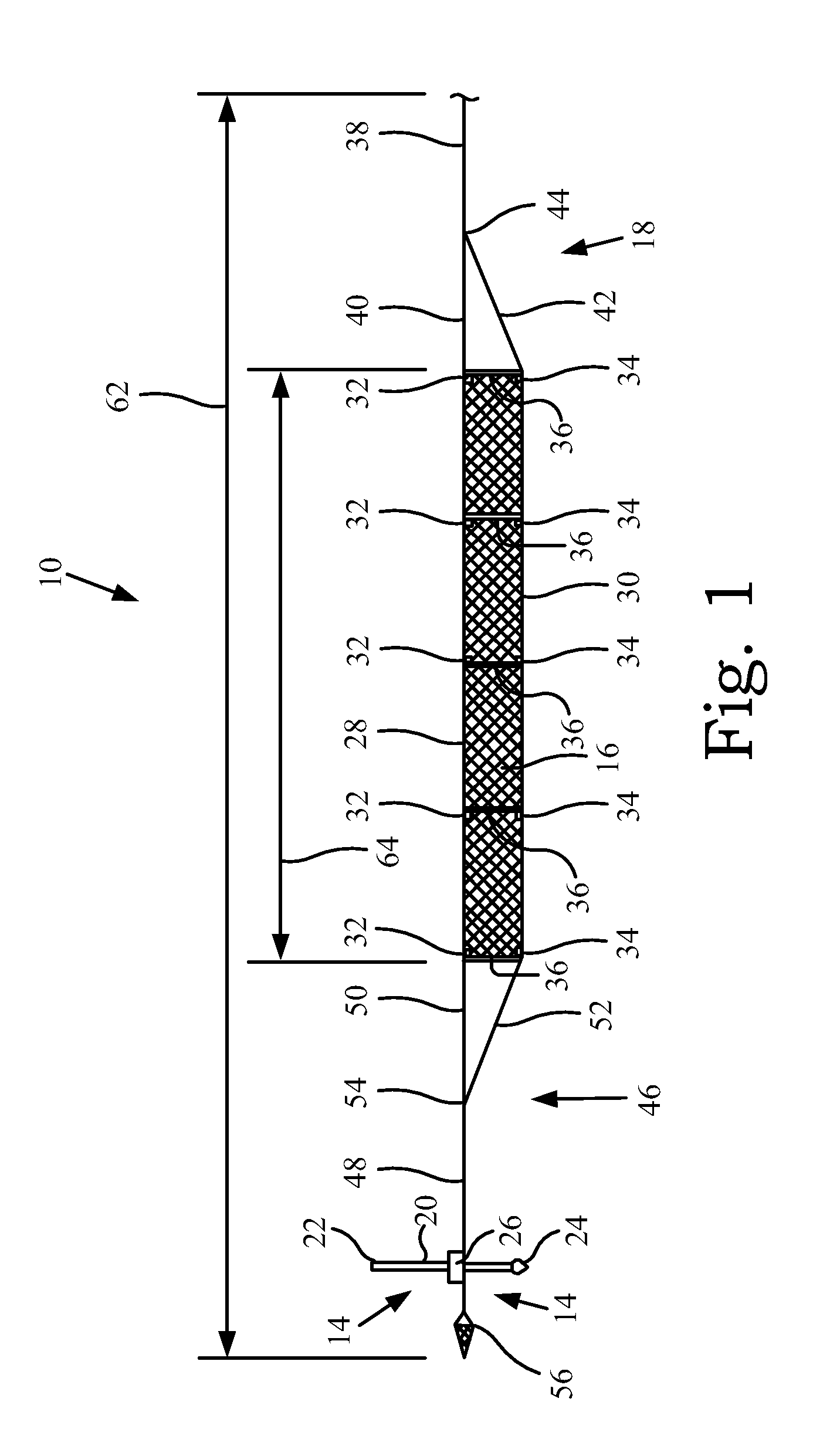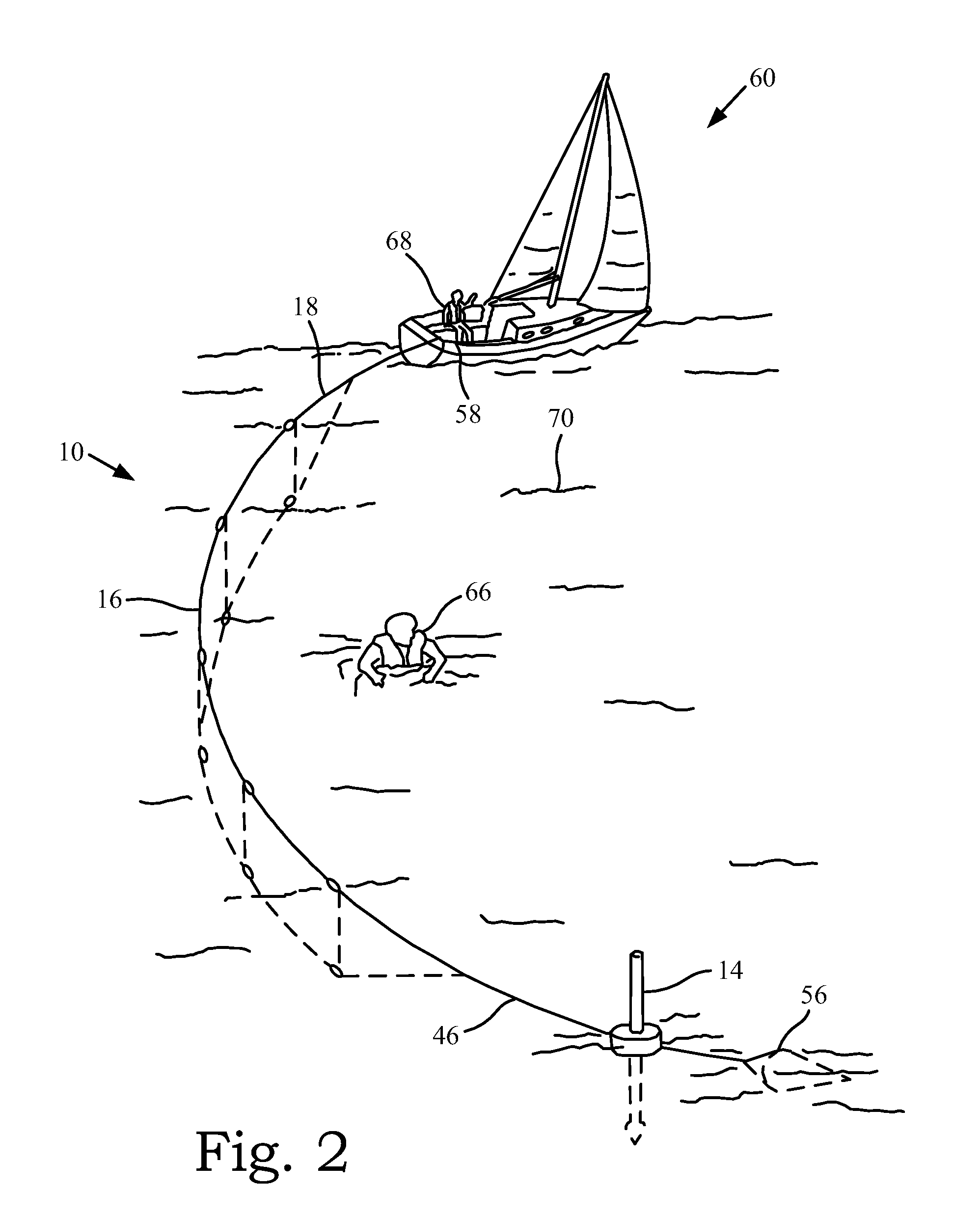Marine crew overboard situations are potentially a matter of life or death.
Even if the overboard person has on a flotation device, an injury may have occurred before, as, or after the crew goes overboard which renders the overboard crew unconscious and / or unable to assist in their own
recovery.
When the temperature of the air (in ° F.) and the temperature of the water (in ° F.) add up to less than 100, the risk of
hypothermia for an overboard person is likely.
If the overboard crew is injured, the injury itself may
pose a severe risk to the overboard person if not treated quickly, thereby further necessitating a quick
recovery of the overboard crew.
The phenomena of “dry drowning” is known where cold water inadvertently swallowed by an overboard person can cause their
esophagus to spasm making it difficult or impossible for the overboard person to breathe.
A person can suffocate and drown under such conditions even though their head is out of the water.
Obviously, in wave conditions particularly, the longer a person is in the water the more likely they are to swallow water.
Additionally, many such boaters have limited or effectively no swimming skills.
If such a person goes overboard, even in the calmest of conditions, the
threat of drowning is immediate.
High winds and
waves can challenge any movement or action on a boat and make the boat difficult to
handle even for a captain and crew well seasoned.
However, in the Great Lakes for example, expediently executing a typical man overboard
drill in 3–5 foot
waves and 20 knots of wind is close to impossible without risking further injury to the overboard crew by contact with the boat.
The combination of wind and
waves, and the
windage of the boat and rigging, make a boat difficult to stop at a precise location relative to the overboard crew.
Therefore, in a minute or less the overboard crew can quickly be out of reach of a throwing line, or if connected to the line, can be towed at 1–2 knots thereby making if difficult to breathe and stay connected to the throwing line.
If the waves start to cap, the overboard crew becomes even more difficult to see and can be continuously dunked by the capping waves.
Capping waves with spray can obliterate the surface of the water thereby rendering
visual contact with the head of the overboard crew very difficult.
Even so, the skipper may have not prepared the crew adequately for a crew overboard emergency.
A typical
scenario is that a boat is taken out for a leisurely
cruise on an idyllic midsummer day, the cruisers are not paying close attention to the weather conditions, and a summer
storm picks up quickly and overtakes the boat.
Storm fronts can move as rapidly as 30–40 knots and can have winds in excess of 60 knots, which winds can quickly change the
sea state, and the leisurely
cruise is now a potential emergency situation.
Conditions are rapidly changing, and in a worse case
scenario, the skipper goes on
deck without proper safety gear, such as personal flotation and a harness connected to a jackline, to adjust some rigging and a strong gust heals the boat sharply, and the combination of the force of the wind, the healing boat, and possibly a wave simultaneously hitting the boat, causes the skipper to lose balance and be knocked overboard.
It is easy to imagine how this crew would find it difficult to execute the multi-step crew overboard process described above, even if they knew what to do.
A skipper and single crew well trained in crew overboard
drill can execute a single handed crew overboard in the event that the other person has gone overboard, however with increasing difficulty as conditions worsen.
If a crew finds themselves in such a
scenario the single handed crew may develop a feeling of
panic thereby adding difficulty to any rescue.
In addition to the difficulty of maneuvering the sling to the reachable vicinity of the overboard crew, the overboard crew must be able to position the sling under their arms, which can be difficult for a fully conscious and uninjured overboard crew in high winds and / or a difficult
sea state, and even more so difficult or impossible for an unconscious or injured overboard crew.
Even a strong swimmer with rescue training will find such a task difficult, particularly in difficult seas.
Further, placing a rescue swimmer in the water may be the most dangerous option for typical recreational boating amateurs, relative to the safety of the crew and boat, particularly when there is only one crew onboard to begin with.
Another option is to radio in a mayday for a rescue operation executed by the Coast Guard, for example, but this option can be very costly.
Calling in rescue professionals can also take some time to implement, depending on how far the nearest Coast Guard facility is from the rescue site, and what mode of transportation (sea and / or air) that the Coast Guard uses to convey itself to the rescue site.
A person in the water may not be able to survive even a very prompt Coast Guard response, depending on how far away the rescue location is from the Coast Guard
station.
 Login to View More
Login to View More  Login to View More
Login to View More 


